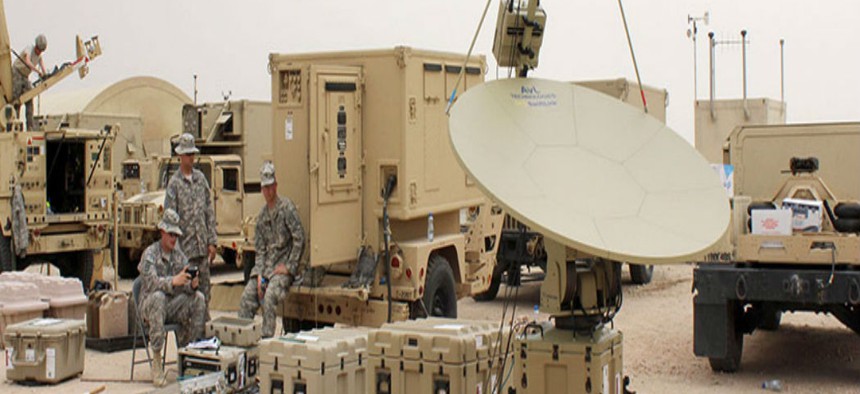Army Battlefield Network Under Review: What’s Next for WIN-T?
Army Chief of Staff Mark Milley cited several issues with the Army’s emerging WIN-T communications technology.
The Army is “taking a hard look” at its flagship tactical communications network after receiving more negative reviews from the field, said Chief of Staff Gen. Mark Milley. He listed several issues plaguing the Warfighter Information Network-Tactical, known as WIN-T: it is too complex to operate in combat conditions, it is not as transportable as it needs to be, and it is not completely secure from cyber intrusions.
This is clearly bad news for the Army, as deployed soldiers depend on WIN-T for voice and data communications around the world. Milley assured a Senate panel last month that he has this under control, however. The Army has begun a “rigorous, thorough and painful review of the entire communication electromagnetic capabilities of the U.S. Army of which WIN-T is one part.”
Pentagon procurement chief James MacStravic, who is currently performing the duties of undersecretary of defense for acquisition, technology and logistics, said he expects to hear more about WIN-T in the coming weeks as the Army puts forth a plan to fix the problems. “I have a high degree of confidence that the next decision the Army brings me on WIN-T will be executable, affordable and useful. What that is, I don’t know,” he said last week at an AFCEA information technology conference.
Senate Armed Services Committee Chairman Sen. John McCain blasted Army leaders for WIN-T performance setbacks and questioned how it is possible that these issues are now surfacing after the Army already invested $6 billion in the program. Congress appropriated $552 million for WIN-T in fiscal year 2017, and the Army is seeking $420 million for 2018.
MacStravic blamed the troubles on the sheer size of the program. High-tech systems that require frequent updates are hard to manage when they are as large as WIN-T, he said. “As a rule, if you can avoid being an ACAT-1 program, do it.” ACAT-1 is the category for the largest acquisition programs. “WIN-T is an ACAT-1 program because you buy so much, not because it’s that hard.” It may have been too ambitious of an undertaking to begin with, he said. “The problem is that it was supposed to be all things to all people. And it can’t be.”
Industry experts who spoke with Defense Systems on background said WIN-T has suffered from the slow pace of development and production, and the Army’s inability to keep up with the speed of innovation in the IT world.
A spokesman for WIN-T prime contractor General Dynamics Mission Systems said in a statement: “We continue to work with the Army to increase network automation and ease of use for soldiers.”
WIN-T increment 1 was fielded to the entire Army between 2004 and 20012. An increment 1b upgrade was developed to improve cybersecurity. Increment 2 is focused on mobile users, and was approved for full rate production in June 2015 by the Defense Department. It has so far been fielded to 14 brigade combat teams and eight division headquarters. WIN-T increment 3 is in development, and one of its key features will be “ease of use.”
“The underlying commercial technology in Increment 2 has been kept current and system enhancements continue, including size, weight and power reductions to improve mobility,” the GD spokesman said. ‘WIN-T provides a flexible means to rapidly insert new capabilities, including advances in cyber and electronic warfare protection.”
Milley raised serious questions about the program going forward. “Frankly, my concern is these systems may or may not work in the conditions of combat that I envision in the future,” he told the SASC May 25.
Meanwhile, a letter signed by 176 House and Senate members was sent to Milley last month, asking for the program to be accelerated. “I'm not going to accelerate it until I'm convinced it will work in combat against the enemies of our country that may be coming in the future,” Milley insisted. “That's kind of where we stand right now. But I owe you and this committee and others a rigorous review within about four to six weeks.”




